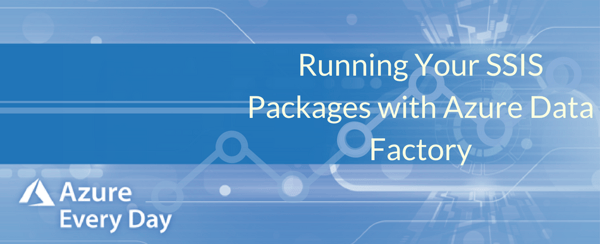
Most of you recognize that SSIS is a powerful toolset for data orchestration and integration. As more companies move to Azure, or even hybrid implementations, they know that SSIS has not traditionally had a home in Azure. I recently wrote an eBook on this topic and in this post, I want to talk about running your SSIS packages in the cloud with Azure Data Factory (aka ADF) and tell you what I cover in my eBook.
If you want to run your SSIS packages in the cloud, you could provision virtual machines (VMs) in Azure and many companies have done this. But scaling, patching and monitoring those VMs comes with an operational overhead. Fortunately, Azure Data Factory now offers the SSIS Integration Runtime, which let’s you run your SSIS packages inside of ADF compute, giving you the ability to scale that compute both vertically and horizontally.
My eBook covers some of the business reasons why you would want to lift and shift your SSIS packages to Azure, as well as addresses common considerations and concerns. Additionally, I give a technical walkthrough of setting up the integration runtime, migrating your packages and will show you how multiple methods can be used to execute and monitor your SSIS workloads in ADF.
If you want to learn more or have questions about how you can implement this or any Azure product in your organization, click the link below or contact us—we are your resource for all things Azure and we’d love to help.
Don't forget to check out the Pragmatic Works' on-demand learning platform for more insightful content and training sessions on Power BI, Power Apps, Power Automate, Copilot Studio, Fabric, Azure and other Microsoft applications. Be sure to subscribe to the Pragmatic Works YouTube channel to stay up-to-date on the latest tips and tricks.
It's also easy to get started with your 7-day free trial. Just click below and you'll be on your way.


-1.png)
Leave a comment